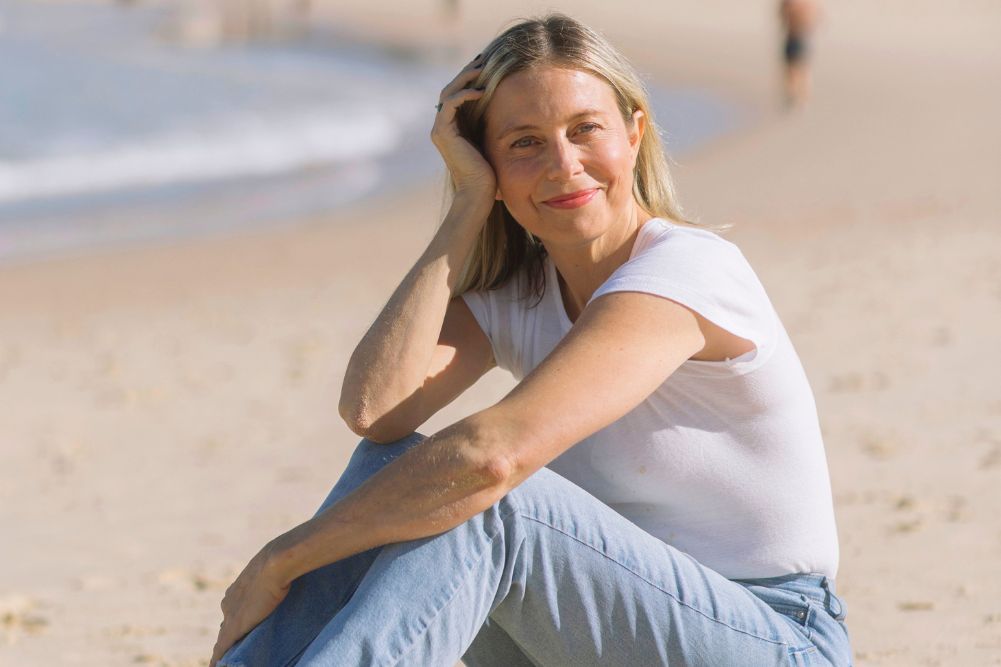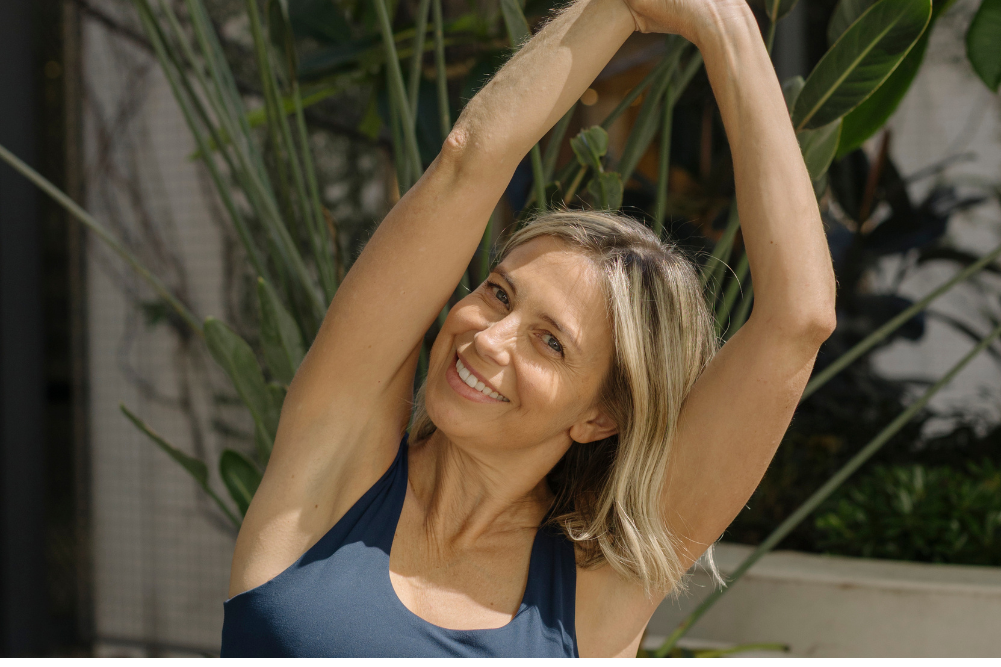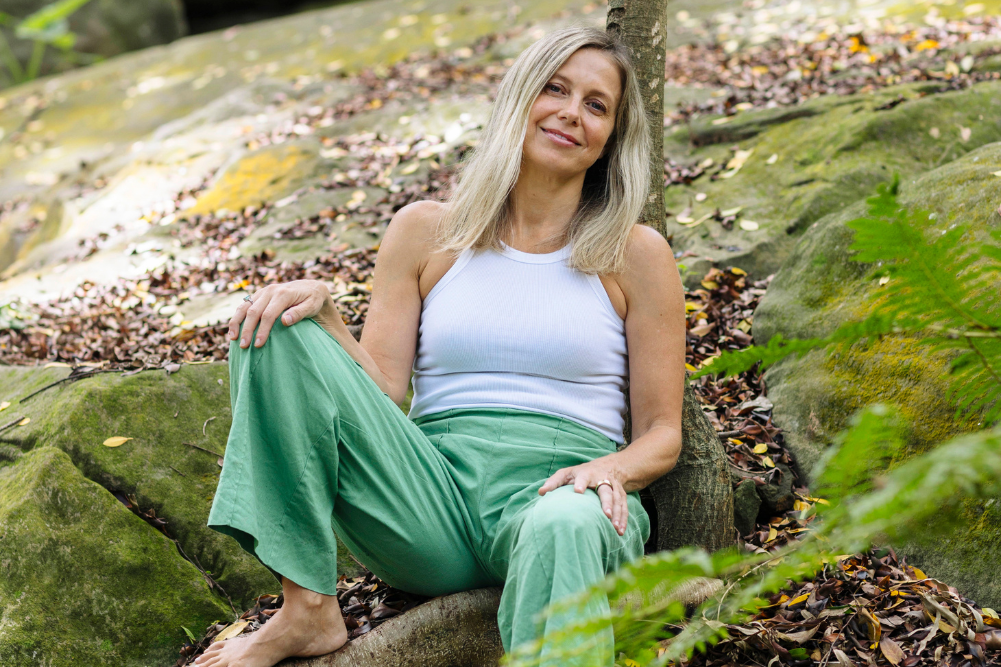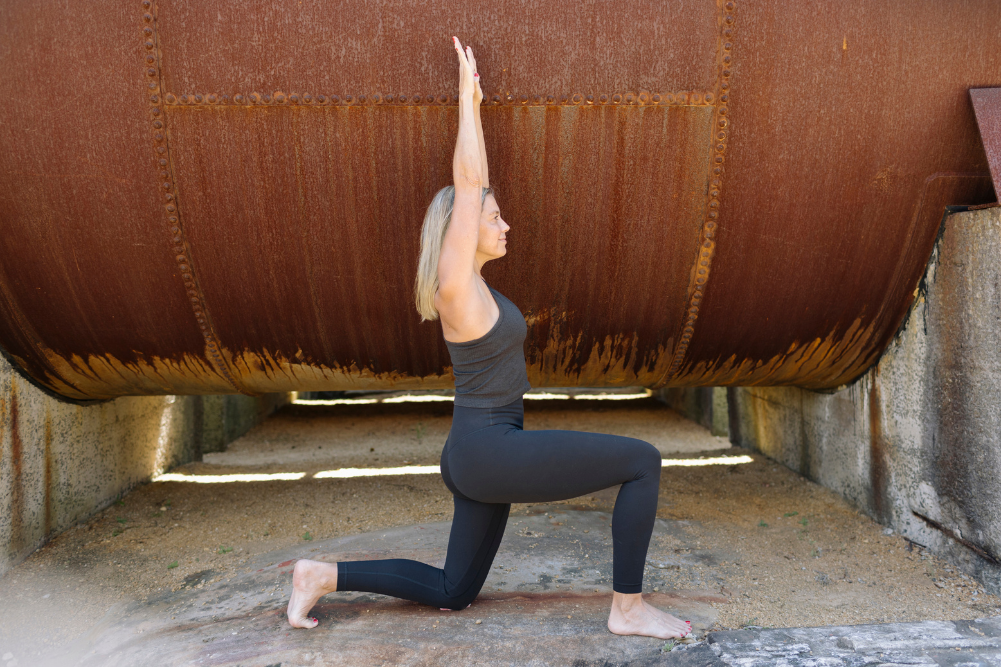Stretching for enlightenment
It is common to hear people say they are too inflexible, too uncoordinated or too much of a couch potato to take up yoga. However, yoga is a very personal practice that’s suitable for almost anyone regardless of age, gender, weight or fitness level. Yoga offers a unique range of benefits that make it a valuable addition to any fitness regime. Yet, with so many different styles and a 5000-year history behind it, where should you start? Let’s take a look at yoga and why it’s well worth integrating into your life.
What is yoga?
Although yoga has experienced a revival in more mainstream circles in the past 20 or so years, it is a centuries-old practice that began in India. Over the years, different forms of yoga have sprung up, including Asthanga, Vinyasa, Iyengar, Kundalini, Bikram and many more. Although they may differ in style and approach, they all have at their centre the essential aim of balancing the body, mind and soul. The word yoga is actually derived from the Sanskrit root, yug, meaning “union” or “to yoke”.
Newcomers to yoga may think of the practice only as a series of stretches that tone, strengthen and improve flexibility, and indeed they do. However, yoga postures or asanas make up just one aspect of the practice. The Yoga Sutras compiled by the sage, Patanjali, around 2000 years ago outline eight limbs of yoga. When practised together, these help guide the way toward enlightenment. They include yama (social discipline), niyama (self discipline), asana (postures), pranayama (breath control), pratyahara (sense withdrawal), dharana (concentration), dhyana (meditation) and samadhi (union with God). As we will see, integrating these various facets can help us achieve the deeper mental, emotional and spiritual benefits of yoga.
Let’s get physical
Before we delve into the deeper benefits of yoga let’s start with the physical element, which initially drives many to try out the practice. Asanas can essentially be broken down into categories of standing, sitting, prone and supine. Within these, there are forward bends, balancing poses (including arm balances), inversions, twists, backbends and reclining and relaxing poses.
On a physical level, yoga asanas are classified as isometric, meaning muscle length is constant and poses are static (the asana itself is steady although movement is required to transition in and out of it). This is particularly beneficial for building muscular endurance and toning the body, including the internal organs. The physical benefits of yoga are diverse and unique when compared to any other form of exercise. Often asanas will stimulate one or more areas of the body including:
The cardiovascular system: Yoga helps improve heart health. During asana practice, the heart rate actually decreases. Asanas work to increase circulation throughout the body and can also help normalise blood pressure.
The digestive system: The massaging effect created around the abdominal area, especially in twists and forward bends, helps improve digestion and increases blood circulation to this area.
The musculo-skeletal system: Yoga mobilises the joints, improves mobility and bodily awareness, increases strength and flexibility and helps keep the bones strong. This can be effective for protecting against a range of conditions, including back pain and arthritis.
Nervous and respiratory system: Unlike with other exercises, the respiratory rate slows during yoga. Yoga encourages deep, full breathing, which improves the function of the lungs. This has a calming effect on the body, most notably the nervous system.
Beyond the body
As well as the physical, yoga works on a deeper level. It aims to help us discover something more profound about our true natures and unite the many layers of our beings. This union refers to the balance of the body, mind, emotions and soul. One way yoga works to achieve unity is by cultivating the mind. We have what is commonly referred to as a “monkey mind.” Our minds jumps aimlessly from one thought to another. The more fluctuations of the mind, the more stresses it encounters.
This imbalance can lead to blockages in the flow of energy. These blockages, in turn, may cause disease and disharmony (physically, mentally and emotionally). Yogic practices such as asanas, especially when combined with pranayama and meditation, help still the mind and remove these blockages so to bring the physical body back into alignment. This paves the way to allow you to connect with your divine or spiritual self.
Yoga for the mind and spirit
According to the yogic texts, the purpose of asanas is to prepare the body and mind for meditation. In order to maintain a posture, focus, concentration and mental strength are required. For instance, to hold an asana and achieve the total benefits it has to offer, you can’t be thinking, “How much longer do I have to hold this pose?” or “What am I going to cook tonight?” Instead, allow your mind to focus on a single point and revel in the present moment.
By stilling the mind, you can allow yourself to really tap into the deeper benefits of a pose. Practising with awareness allows asanas to become meditative and deeply relaxing. This, in turn, can help you achieve the emotional and mental benefits of a pose such as relief of stress, anxiety and tension, improved concentration and confidence, and a more positive or contented outlook.
Pranayama is also a beneficial practice to help achieve the deeper benefits of yoga. Pranayama literally translates to “breath extension”. By controlling and focusing the breath we can help ensure the free flow of prana (life force) and remove blockages in the body. There is a range of pranayama breath exercises that expand the chest, soothe and calm the nervous system and contribute to an overall sense of health and wellbeing.
Learning to practise mindfully rather than just feel the burn opens us to the spiritual element of yoga. Working toward this will be the most effective way to achieve the total benefits yoga has to offer.
Is yoga for you?
So it all sounds great, doesn’t it? But is yoga really for you? The only way you’ll know is by giving it a shot. Don’t discount it because you fear you won’t be good enough. Yoga is a learning process that will see you grow and improve. The great thing about yoga is that there are so many different variations of the one pose. For instance, downward-facing dog, one of yoga’s most iconic poses, can be done on the forearms for those who have sensitive wrists. You have a bad back? Performing the warrior one pose with the elbows bent and open to the side can make all the difference. Many classes also offer props such as straps, blocks, bolsters and wall ropes, which can support you in the posture but still allow you to get the benefits of a stretch. If a posture is out of your reach (for now), don’t worry — there’s a yoga variation or modification for you.
Similarly, don’t feel that you should avoid yoga because you have a certain ailment. Yoga is used as medicine to treat a range of conditions, including back pain, sciatica, asthma, arthritis, anxiety and panic attacks, depression, infertility, multiple sclerosis, obesity and more. However, if you do have a medical condition, it’s best to first consult your practitioner and always advise your yoga teacher of any conditions or injuries you have. There will naturally be poses you should avoid, but there will also be plenty (including modifications) that will be of great benefit. There are also specialty classes available if you’d like more attention to your needs, including yoga therapy and restorative, prenatal and one-on-one sessions.
Your yogic journey
Yoga may present different challenges for different people. For many, the main challenge is finding the motivation to actually begin attending a class. Then, once you start a class, it’s common for students to be still unsure when it comes to their ability. Some may be fearful of backbends or take years, even with regular practice, to attempt a headstand. Yoga is a personal journey that builds patience, endurance and trust in yourself. This is effective for helping you go beyond your boundaries. However, at the same time, you don’t want to be thrown into a posture in which you are uncomfortable.
In the yogic text Hatha Yoga Pradipika, there is a Sanskrit phrase: sthira sukham asanam, meaning “steady and comfortable position”. This is what an asana should be. Within the first limb of Ashtanga yoga, yama, there is a concept known as ahimsa or non-violence. Among other things, ahimsa means refraining from harming yourself or others mentally, verbally and physically. Therefore unlike other forms of exercise, asanas should be performed to your own ability and comfort level. Pain is no gain here.
Non-competitiveness is also an essential element of yoga, so leave your ego behind. If you do feel uncomfortable or experience excessive strain at any time, gently come out of the asana and into a recovery pose. Your comfort should always be your main priority. Your teacher will almost always offer modifications or alternate poses, so you can be assured you won’t be asked to so a headstand in your first class. Unless you’re attending a master class, chances are most people in your session are in the same boat as you, so don’t be self-conscious or worry about embarrassing yourself.
As with any practice, the role and guidance of the teacher are essential. He or she will be able to assist in any challenges you experience in practice and those you may bring to class. As yoga delves beyond your physical exterior, it’s possible to awaken or even be confronted with past experiences or a feeling you have suppressed, especially during meditation work. This is all part of the learning and growing experience yoga offers. Your teacher will be able provide guidance here.
Becoming a regular yogi or yogini
Once you start attending a class, you’ve made the first and biggest step. Now it’s just keeping up that effort and establishing yourself as a regular yogi or yogini. Many start yoga strictly for the physical aspect and there is nothing wrong with this. However, with dedicated practice it’s almost natural that the spiritual and emotional benefits will flow through. Remember, though, you can’t expect results overnight. Maintaining regular and sustained practice is almost a guaranteed way to achieve the deeper benefits of yoga as well as ensure the quality of your progress.
If you’re new to yoga, try experimenting. Try different classes and find a style, teacher and studio that suit you and make you feel comfortable. Even get a friend to come along to class for extra motivation. Finding the right class and making yoga something you actually enjoy and look forward to will naturally mean you will be more dedicated and in tune with your practice.
When classes are done for the week, many are unsure what to do in order to stay active and to keep up the great feeling they get when they step on the mat. The key lies in sustained home practice. Without the motivation and guidance of a teacher, it’s hard to know where to begin. But just remember, home practice doesn’t have to be the full hour-and-a-half you get at your weekly class. You might simply choose to relinquish a half-hour of sleep every morning or TV time on the weekend to fit in some yoga.
A bit of preparation is always beneficial when it comes to home practice. Firstly, choose an area that is well ventilated and has plenty of room to allow you to move around. Make this your set space for home practice. Try further setting the scene by burning incense, opening a window or playing music.
Before beginning practice, set your intention. What do you want to achieve? Do you have a sore back and want to go gentle today or are you pumped for a rigorous routine? Regardless of your intention, think of yoga as this: a chance for time to yourself. If you are feeling a bit overwhelmed at the moment and your monkey mind is going haywire, yoga offers an opportunity for you to put all those thoughts completely out of your mind. Then, when you have to return to them, it’s common to feel a greater sense of clarity and calm. What’s not to like about that?
If you are having trouble making time for home practice, the smallest things can make all the difference. For instance, just take a few minutes and complete some basic stretches and twists during your day. Or, after a hard day at the office, rest flat on your back in the corpse pose or retreat into the child’s pose to allow your body and mind to relax.
Creating a routine
Ideally, your home practice should be as varied as possible to ensure you remain engaged and challenged. If you are attending a class once a week, think what you liked about it. Was there a certain pose that helped relieve your neck-ache? Was there a warm-up sequence that got your blood pumping? Write down a couple of notes or, if you have a good memory, the whole routine (excluding any poses you don’t feel comfortable practising without supervision). You can then use these to create a home routine. Practice at home is also an effective way to help set and reach goals. For instance, you might try to hold a forward bend you learnt in class for 10 seconds, then 30 seconds and gradually extend to one minute.
Depending on how much time you have for home practice, see if your routine can encompass poses across the standing, sitting, prone and supine categories, including twists, forward bends, inversions, balancing and restorative poses.
However, this is easier said than done, especially if you are new to yoga. That’s why the Salute to the Sun, also known as Surya namaskara is so beneficial. Surya namaskara involves a sequence of eight postures. The sequence is versatile. It can be performed at a faster pace (roughly 15 seconds per round) to make the series dynamic or slower (45 seconds per round or more) for the more meditative benefits. The sequence energises and stretches the entire body and also introduces some of yoga’s core postures, which can also be practised on their own as well as being part of the sequence. Completing several rounds of Surya namaskara can make a simple and effective home practice in itself or can act as a warm-up.
A yoga sequence
Surya namasakra is deeply rooted in tradition. It is a way to greet (namaska) or honour Surya (the sun god) and thus is traditionally performed facing the sun. If you are performing this in the morning, allow it to set the tone for the rest of your day with gratitude and humility.
Note: Try to synchronise the movements with the breath. Variations are also noted. Stronger variations can be integrated after several rounds once you have warmed up.
Namaskara — prayer position
Bring the hands together in prayer at the heart centre. Begin by bringing awareness to the soles of the feet. Allow your awareness to travel further up the legs to the calves, kneecap and thighs. Lift up from the sternum and lengthen the spine. Feel the chest naturally open. Focus on the breath and flow of energy throughout the body. Inhale and lift up the arms. This is known as hastasana. Stretch upwards toward the fingertips.
Variation: as you warm up the body, ease yourself into a backbend.
Uttanasana — forward bend
Exhale and bend forward from the waist. Maintain the length through the arms as you slowly bring the hands onto the mat. First, extend the head away from the body and elongate the spine. Then come into the full forward bend and bring the head closer to the legs. The knees can be gently bent to relieve pressure on the lower back.
Lunge
Inhale and step the left foot back. Set the gaze forward. Keep the right knee bent and in line with the ankle. Don’t allow the knee to come inwards. It should be pointing slightly outward towards the little toe.
Plank
Hold the breath and step the right foot next to the left. Keep the shoulders in line with the wrists. Don’t dip the spine or raise it too high. Keep the back completely straight. Plank is a great pose for fostering arm and abdominal strength as well as concentration and endurance.
Gentle variation: bend at the waist and lift the heels off the mat and come into the high push-up.
Ashtanga — eight limbed pose
Keep the toes propped on to mat. On an exhale, bend the knees, lowering them onto the mat followed by the chin and chest. Keep the elbows bent and close to the body.
Variation: chaturanga — four-limbed staff pose.
For a stronger variation, keep the elbows bent and lower the body so it is straight and hovering just above the mat.
Bhujangasana — cobra
Inhale and scoop up into cobra. Keep the shoulders relaxed and avoid hunching. Feel the chest expand. Keep the neck long and direct the gaze upward. The elbows can be gently bent to relieve any pressure on the back.
Variation: urdhva mukha svanasana — upward dog
From cobra, lift the hips, thighs and kneecaps off the mat.
Ardho mukha svanasana — downward dog
Exhale, prop the toes on the mat and lift up the hips so the body creates an inverted letter V. Try to bring the heels as close to the mat as possible. Distribute your weight evenly between the palms and feet. Lengthen from the sides and lift up the pelvis.
Lunge
Inhale, step the right foot forward and come into the lunge again
Uttanasana
Exhale, step the left foot next to the right and enter the forward bend.
Hastasana/namaskara
On an inhale, bend the knees and raise the arms above the head. Exhale and return the hands back to the heart centre in namaskara.
*Start the next round lunging with the left foot first.
Veronica Joseph is a hatha yoga teacher who offers classes in Sydney’s northwest. She can be contacted at veronicaajoseph@gmail.com







